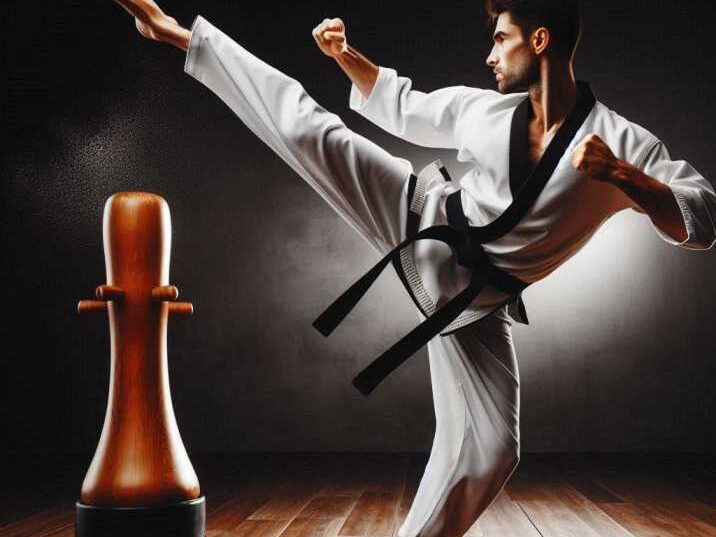Introduction
Table of Contents
Have you ever wondered how martial arts and boxing are different? Both are exciting and powerful forms of combat, but they have unique styles, techniques, and goals. Whether you’re interested in learning self-defense, competing in sports, or just curious about these practices, understanding their differences can be really helpful. In this article, we will explore what sets martial arts apart from boxing. We’ll look at their history, techniques, training methods, and more. Let’s dive into the world of these two amazing disciplines!
Table of Contents
- What is Martial Arts?
- What is Boxing?
- Key Differences Between Martial Arts and Boxing
- Techniques and Skills
- Training and Conditioning
- Goals and Objectives
- Popular Styles in Martial Arts
- Popular Styles in Boxing
- Which One is Right for You?
- Conclusion
- FAQs
What is Martial Arts?
Martial arts is a broad term that refers to various fighting styles and systems developed for self-defense, military training, and sport. These disciplines originated from different cultures around the world and often include both armed and unarmed combat techniques.

Historical Background
Martial arts have been practiced for thousands of years. Ancient Chinese martial arts, like Kung Fu, and Japanese martial arts, such as Judo and Karate, are among the earliest forms. They were developed to improve physical fitness, combat skills, and discipline.
Types of Martial Arts
Some common types of martial arts include:
Karate
Karate is a Japanese martial art that emphasizes striking techniques, including punches, kicks, knee strikes, and elbow strikes. Practitioners use quick, powerful movements to disable opponents. Karate also involves defensive techniques like blocking and parrying. It’s known for its disciplined training and focus on form (kata), sparring (kumite), and self-defense.
Judo
Judo is a Japanese martial art that focuses on throws, joint locks, and grappling techniques. Instead of striking, Judo practitioners aim to use their opponent’s force against them, often throwing them to the ground or pinning them. Judo emphasizes leverage, balance, and technique over brute strength, making it effective for self-defense and sport.
Taekwondo
Taekwondo is a Korean martial art famous for its high, fast kicks, spinning techniques, and jumping kicks. It combines speed and agility with powerful strikes, primarily focusing on the legs. Taekwondo also includes hand strikes, blocks, and forms (known as poomsae). It’s a popular martial art for both self-defense and sport, with a strong emphasis on discipline and respect.
Brazilian Jiu-Jitsu
Brazilian Jiu-Jitsu (BJJ) is a martial art that specializes in ground fighting and submission holds. It teaches practitioners how to control and subdue opponents through techniques like joint locks and chokeholds. BJJ is highly effective in self-defense situations, especially against larger opponents, as it relies on technique and leverage rather than strength.
What is Boxing?
Boxing is a sport where two people fight using only their fists, while wearing gloves. The goal is to score points by landing punches on your opponent or to win by knocking them out.
Historical Background
Boxing dates back to ancient Greece, where it was part of the Olympic Games. Modern boxing, as we know it today, evolved in the 18th and 19th centuries in England.
Boxing Techniques
Boxers use various techniques, including,
Jabs
Jabs are quick, straight punches that boxers use to maintain distance, control the pace of a fight, and set up more powerful punches. Delivered with the lead hand, jabs are often the most frequently used punch in boxing. They help keep opponents at bay, disrupt their rhythm, and can be used to score points or create openings for other punches.
Hooks
Hooks are powerful, curved punches thrown with the lead or rear hand, targeting the sides of the opponent’s head or body. The hook’s circular motion makes it a devastating punch, especially when it connects with the opponent’s jaw or ribs. Hooks are often used at close range and can knock out or significantly weaken an opponent.
Uppercuts
Uppercuts are upward punches aimed at the opponent’s chin or jaw, often delivered from a close range. This punch is thrown from a crouched position, making it difficult for the opponent to see it coming. Uppercuts can be highly effective in breaking through an opponent’s guard and delivering a knockout blow when timed correctly.
Key Differences Between Martial Arts and Boxing
Techniques and Skills
Martial Arts: Martial arts use a wide range of techniques, including kicks, punches, blocks, and throws. They may also involve the use of weapons. Martial arts often combine physical techniques with mental discipline.
Boxing: Boxing focuses solely on punches and footwork. Boxers train to develop powerful and precise punches, defensive skills, and movement. There are no kicks or grappling in boxing.
Training and Conditioning
Martial Arts: Training in martial arts usually involves practicing forms (katas), sparring with partners, and learning self-defense techniques. It also includes mental conditioning, such as meditation and focus.
Boxing: Boxers engage in intense conditioning drills, such as running, skipping rope, and hitting heavy bags. They focus on building strength, speed, and stamina. Boxing training is heavily oriented towards physical fitness and fighting skills.
Goals and Objectives
Martial Arts: The goals of martial arts can vary. Some people practice martial arts for self-defense, others for sport, and some for personal growth and discipline. Martial arts often emphasize respect, self-control, and philosophy.
Boxing: The primary goal in boxing is to win matches by scoring points or achieving a knockout. While boxing also helps with fitness and discipline, its main focus is on competition and fighting skills.

Popular Styles in Martial Arts
| Martial Art | Origin | Key Techniques |
|---|---|---|
| Karate | Japan | Striking (punches, kicks) |
| Judo | Japan | Throws, grappling |
| Taekwondo | Korea | High kicks, jumping techniques |
| Brazilian Jiu-Jitsu | Brazil | Ground fighting, submissions |
| Kung Fu | China | Striking, forms (katas) |
Popular Styles in Boxing
| Boxing Style | Description |
|---|---|
| Professional Boxing | Competitive sport with strict rules and rounds |
| Amateur Boxing | Non-professional, often part of the Olympics |
| Lightweight Boxing | Focuses on speed and agility |
| Heavyweight Boxing | Emphasizes power and strength |
Which One is Right for You?
Choosing between martial arts and boxing depends on your interests and goals. If you want to learn a variety of techniques and experience different combat styles, martial arts might be for you. If you’re interested in focusing on punching skills and competitive sport, boxing could be a better fit.
Conclusion
Both martial arts and boxing offer unique benefits and challenges. Whether you’re drawn to the diverse techniques of martial arts or the intense focus of boxing, each discipline provides valuable skills and lessons. Understanding their differences can help you choose the right path for your personal goals and interests.
FAQs
- What is the main difference between martial arts and boxing?
- Martial arts include various techniques and styles, while boxing focuses solely on punching.
- Can you learn martial arts and boxing at the same time?
- Yes, many people practice both to improve their overall combat skills.
- Is martial arts good for self-defense?
- Yes, martial arts teach various self-defense techniques and strategies.
- What equipment do you need for boxing?
- You need boxing gloves, hand wraps, and sometimes a mouthguard.
- Do martial arts include weapons training?
- Some martial arts, like Kendo or Kali, include weapons training, while others focus on unarmed combat.


